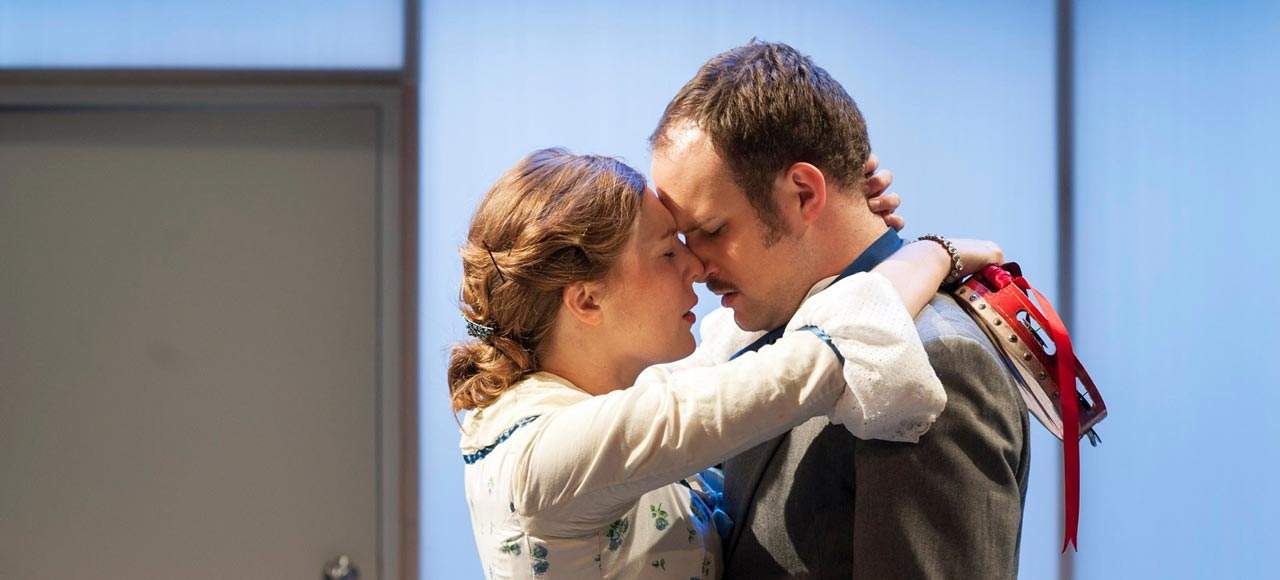A Doll’s House – Sport for Jove
The original breakup drama still speaks volumes.
Overview
There are a lot of cliches in breaking up. It's not you it's me. I can't be with anyone right now. You're not in love with me; you're in love with the idea of me. Pretty much all of those cliches, it seems, had their first outing in an 1879 play, A Doll's House by Henrik Ibsen, when Nora Helmer walked out on her husband, introducing the European public to the idea that relationships can and sometimes should end.
It didn't go down too well, with many people scandalised and the ending softened for a future production. But it's an idea that's lasted and a play that's never lost its resonance. Much-loved independent company Sport for Jove are breaking with their usual Shakespeare programming to present this traditional but ever sparkling, beautifully honed production.
A Doll's House is all about lead Nora (Matilda Ridgway), devoted and happy wife of Torvald (Douglas Hansell). She believes her bank manager husband is a more heroic man than he is, though he's openly a self-involved, controlling sexist around her. For his part, he thinks she's a helpless, pretty little bird, though it's something she layers on for his benefit. Little does Torvald know that Nora once engineered a scheme that would save his life but hurt his pride — and you know that revelation is not going to go down well, despite her faith in a "miracle".
A Doll's House stuns with its early feminist insights into power and relationships, but its ultimate idea that to flourish in a couple, we first need to know ourselves as individuals is one that resonates for all genders. The emotional minefield of bad relationships is palpable in this crystalline production, adapted and directed by Adam Cook.
A lot of this works so well because Ridgway is sensational in the part. As Nora, she has to manage so many different modes of being in front of so many different characters, and each evolving as her predicament progresses. From ditsy to defiant, she gracefully nails each stop on Nora's journey, while adding playful charm that actually makes us like her. If Ridgway's not in demand for a dozen main stage roles after this, it's a scandal.
While performances from the whole cast (including Anthony Gooley as the slippery Krogstad and Barry French as dear family friend Dr Rank) make the script sing, it's a shame that the set seems to try for full 19th-century bourgeois Norway on a budget. With unrestored vintage furniture, insurance-firm grey carpet, startlingly ordinary doors, and brown, brown everywhere, the look is so drab and depressing, it's distracting.
Most baffling of all, when the set does break from realism — with semitransparent back walls bathed in glowing blue light — it's only to create another eyesore. Even for a traditional staging, it's unfortunate that more creative solutions could not have been found for a room furnished "comfortably and tastefully". Designer Hugh O'Connor has done a wonderful job with the period costumes, however, which set the tone for the drama nicely.
Some stories never get old. Others only get more interesting when we are allowed the joy of viewing of them with modern eyes. A Doll's House is such a story. With a 'sequel' coming up from the crafty minds at Belvoir, it's worth catching up on this classic now.





